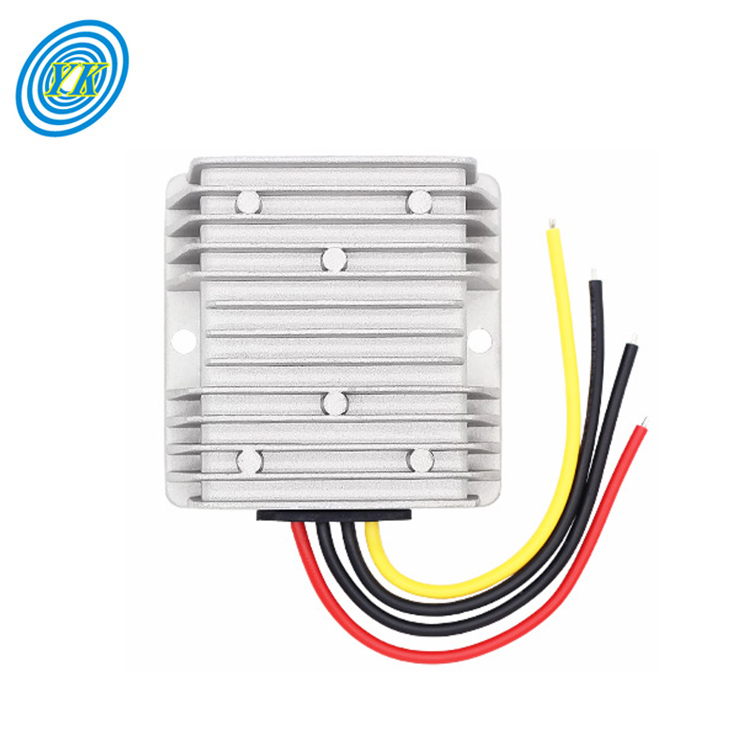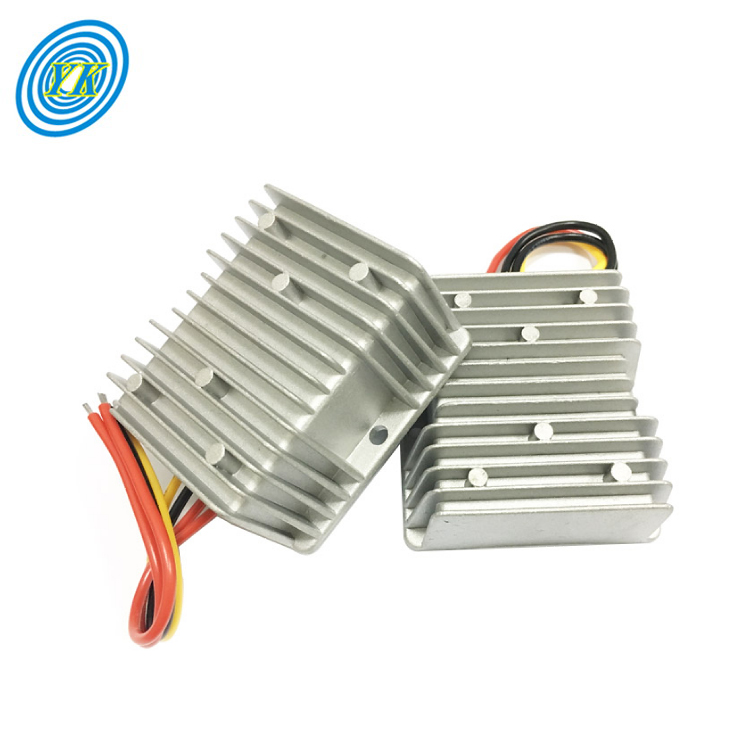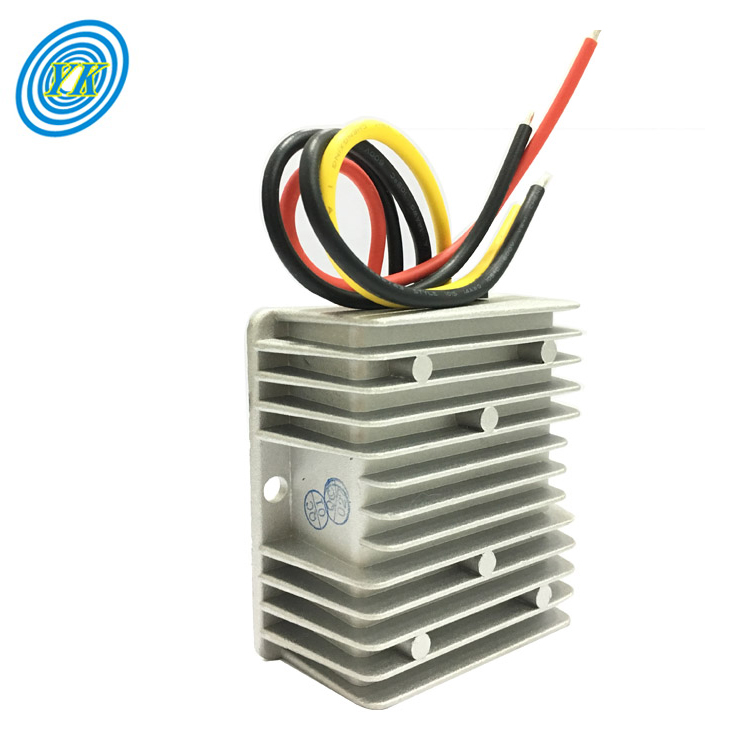News
Boost Converters: Design, Simulation, Control, and Applications in Power Systems
Click: 709 Date: 03/20/2024 4::21::59 PM
Boost Converters: Design, Simulation, Control, and Applications in Power Systems

In the quest to optimize efficiency in Boost Converter designs, the choice between synchronous and asynchronous topologies plays a pivotal role. Synchronous converters, which integrate a low-side power MOSFET to replace the external high-loss Schottky diode, offer superior efficiency by minimizing power dissipation. This is particularly advantageous in applications where power efficiency is paramount, such as in compact form factors where space is limited. The synchronous design not only enhances efficiency but also reduces the forward voltage drop across the diode, which is a significant factor in the overall performance of the converter.
However, it's important to note that while synchronous converters excel in efficiency, they may introduce more noise to the load due to the use of two switching MOSFETs for power regulation. This dual-direction current flow in synchronous converters, which is a disadvantage compared to the unidirectional flow in nonsynchronous converters, necessitates the introduction of different operating modes to optimize performance across various load conditions.
For instance, PWM @ CCM mode allows the converter to respond quickly to load changes, even down to zero load, while maintaining minimal output voltage ripple. This mode, however, offers lower efficiency at light loads. On the other hand, PWM @ DCM mode improves efficiency at light loads by preventing the inductor current from going negative, similar to nonsynchronous solutions. Additionally, PFM with hibernate mode enhances efficiency further by turning off both FETs to skip pulses at light loads, thereby achieving the best possible efficiency and the highest light-load efficiency.
When designing a boost converter, selecting the appropriate PWM duty cycle is crucial. The duty cycle determines the maximum and minimum voltage levels that can be output from the converter, and its limits can be calculated based on the desired output voltage level and efficiency. For asynchronous converters, the forward voltage drop across the diode (VD) is a key factor to consider, as it directly impacts the efficiency of the converter.
In summary, the choice between synchronous and asynchronous topologies for Boost Converters is a balanced decision that hinges on the specific requirements of the application, including efficiency, noise levels, and the need for compact designs. By carefully considering these factors and employing the right operating modes and component selections, designers can achieve the optimal performance for their power conversion needs.
In the realm of boost converter design and simulation, a comprehensive understanding of various simulation and analysis techniques is crucial for validating the functionality and performance of these converters. These techniques encompass a broad spectrum of evaluations, from transient analysis to noise analysis, and even extend to parameter sweeps and Monte Carlo sensitivity checks. Each of these analyses plays a pivotal role in ensuring the converter operates efficiently and reliably under various conditions.
Transient Analysis: This technique is essential for examining the output voltage and residual ripple on the output. By employing a PWM source for switching and an AC source with low amplitude and DC offset to simulate the input DC level with residual ripple, designers can gain insights into the converter's response to rapid changes in input voltage. This analysis is fundamental for assessing the converter's ability to maintain stable output voltage under varying load conditions.
Noise Analysis: Conducted and induced noise can significantly impact the performance of any DC-DC converter. Therefore, it's imperative to evaluate the converter's immunity to such noise. This involves checking the converter's response to both conducted and induced noise, ensuring that the design minimizes the impact of these disturbances on the output voltage.
Parameter Sweep: To qualify the effectiveness of passive components, a parameter sweep can be performed. This involves varying a range of component values while conducting other analyses, such as transient analysis and noise analysis. This method allows designers to identify the optimal component values that yield the best performance.
Monte Carlo Sensitivity: This quick check is invaluable for determining the output's sensitivity to variances in component values. By simulating the impact of component value variations, designers can identify potential weak points in the design that may lead to unpredictable performance under different operating conditions.
DC Sweep and Frequency Sweep: These analyses are crucial for extracting load lines for the switching transistors and understanding how the converter suppresses residual AC noise and low-frequency drift at the output. By examining the cut-off and roll-off of the output, designers can better comprehend the converter's performance under different operating frequencies.
In summary, the simulation and analysis of boost converters involve a multifaceted approach that includes transient analysis, noise analysis, parameter sweeps, Monte Carlo sensitivity checks, DC sweeps, and frequency sweeps. Each of these techniques contributes to a comprehensive evaluation of the converter's performance, ensuring that the design meets the required specifications and operates efficiently under a wide range of conditions.

In the realm of power electronics, the operation of Boost DC-DC Converters is a critical aspect of ensuring efficient and reliable power conversion. This article delves into the intricate world of control strategies and stabilization techniques that are pivotal for the optimal performance of these converters. We will explore the nuances of Pulse Width Modulation (PWM), the backbone of control systems, and the various optimization methods that enhance the stability and efficiency of Boost Converters.
Pulse Width Modulation (PWM) in Boost Converters
PWM is a cornerstone of control strategies for Boost Converters, serving as the foundation for generating switching signals that drive the power switches. The effectiveness of PWM in Boost Converters is contingent upon the selection of suitable modulation techniques, such as PWM itself, Space Vector Modulation (SVM), or Selective Harmonic Elimination (SHE). Each technique has its unique impact on the output waveform, switching frequency, switching losses, harmonic distortion, and electromagnetic interference. The choice of modulation technique is a critical decision that must align with the specific requirements and constraints of the system, ensuring that the converter operates within the desired performance parameters.
Control Systems for Boost Converters
The control systems of Boost Converters are designed to achieve various objectives, such as voltage regulation, current control, power factor correction, maximum power point tracking, and harmonic mitigation. These objectives are met through the application of different control methods, including linear feedback control, nonlinear control, sliding mode control, and predictive control. Each method offers its own set of advantages and disadvantages in terms of stability, robustness, complexity, and performance. The selection of the appropriate control method is a critical step in optimizing the converter's operation, necessitating a thorough evaluation of the system's requirements and limitations.
Optimization Techniques for Boost Converters
Optimization plays a pivotal role in fine-tuning the parameters and settings of Boost Converters to achieve near-optimal performance. Tools and methods such as simulation tools (e.g., MATLAB/Simulink, PLECS, PSIM), analytical tools (e.g., Fourier analysis, Bode plots, Nyquist plots), and numerical tools (e.g., optimization algorithms, genetic algorithms, particle swarm optimization) are employed to model, test, and analyze the system under various conditions. These tools help in identifying the optimal values for system parameters, such as gains, bandwidths, or switching frequencies, thereby enhancing the converter's efficiency and stability.
Feedback and Monitoring in Boost Converters
Feedback and monitoring mechanisms are essential for ensuring the reliability and performance of Boost Converters. These mechanisms detect and correct any errors or deviations in the system, such as sensor noise, measurement errors, load changes, or disturbances. By using feedback sensors (e.g., voltage sensors, current sensors, power sensors) and monitoring devices (e.g., oscilloscopes, spectrum analyzers, power analyzers), the system's output variables can be measured and compared with reference values, ensuring that the converter operates within the desired performance parameters.
Continuous Improvement for Boost Converters
Continuous improvement is a process of constantly seeking and implementing ways to enhance and optimize Boost Converters. This involves the application of continuous improvement techniques, such as the plan-do-check-act (PDCA) cycle, root cause analysis, or Kaizen, to identify and eliminate the sources of waste, variation, or inefficiency in the system. Continuous improvement tools, such as quality function deployment (QFD), failure mode and effects analysis (FMEA), or design of experiments (DOE), are used to prioritize and optimize the features and functions of the system, ensuring that the converter remains at the forefront of power conversion technology.
In conclusion, the control strategies and stabilization techniques for Boost DC-DC Converters are a complex interplay of modulation techniques, control systems, optimization methods, feedback and monitoring mechanisms, and continuous improvement principles. By understanding and applying these strategies, engineers can design and operate Boost Converters that are efficient, stable, and reliable, meeting the demands of modern power systems.
Boost converters play a pivotal role in power systems, particularly in the context of energy storage, microgrids, and renewable energy integration. This article delves into the applications and challenges associated with boost converters in these areas, highlighting their significance in enhancing power reliability, reducing energy costs, and promoting environmental sustainability.
Applications of Boost Converters in Power Systems
Boost converters are integral to the operation of microgrids, which are localized power systems that can operate independently of the main grid. These converters enable the efficient integration of renewable energy sources, such as solar and wind, into microgrids. By converting the variable voltage output of renewable energy sources to a higher voltage suitable for grid connection, boost converters facilitate the seamless integration of renewable energy into the power grid. This not only enhances the reliability of power supply but also supports the development of microgrids, which can provide a secure and cost-effective power source in areas where the main grid is unreliable or expensive.
Moreover, boost converters contribute to the optimization of energy storage systems within microgrids. By managing the charging and discharging processes of energy storage units, these converters ensure that the stored energy is used efficiently, thereby reducing energy costs and improving energy efficiency. The integration of boost converters with energy storage systems is crucial for achieving the decarbonization goals of microgrids, as it allows for the flexible use of renewable energy sources and the storage of excess energy for later use.
Challenges and Opportunities
Despite their benefits, the use of boost converters in power systems presents several challenges. One of the primary challenges is ensuring the stability and reliability of microgrids. The dynamic nature of renewable energy sources and the complex interactions within microgrids can lead to stability issues. To address this, advanced control strategies and optimization techniques are required to ensure that the microgrid can operate reliably under various conditions.
Another challenge is the integration of renewable energy sources with the main grid. The intermittent nature of renewable energy sources and the potential for grid instability can pose significant challenges. Boost converters can help mitigate these challenges by providing a stable interface between the microgrid and the main grid, ensuring that the grid can accommodate the variable output of renewable energy sources.
Despite these challenges, the use of boost converters in power systems offers significant opportunities for improving power reliability, reducing energy costs, and promoting environmental sustainability. With ongoing research and development, it is expected that boost converters will play an increasingly important role in the future of power systems, contributing to the development of smart, sustainable, and resilient power systems.
In conclusion, boost converters are a critical technology in the realm of power systems, particularly in the context of microgrids and renewable energy integration. Their role in enhancing power reliability, reducing energy costs, and promoting environmental sustainability underscores their significance in the evolving landscape of power systems. However, to fully realize their potential, it is essential to address the associated challenges through advanced control strategies and optimization techniques. As research in this area continues to advance, the role of boost converters in power systems is likely to become even more critical in the future.
As we look towards the future of boost converter technology, several advancements are poised to revolutionize the efficiency, stability, and control strategies of these critical components in power systems. This article explores the potential improvements and innovations that could shape the landscape of boost converter technology, focusing on the integration of advanced control strategies, enhancements in efficiency and stability, and the exploration of new applications and challenges.
Enhancing Efficiency and Stability
One of the most promising areas for future advancements in boost converter technology is the pursuit of higher efficiency and improved stability. Traditional boost converters have been a cornerstone of power electronics, enabling the conversion of lower voltage DC sources to higher voltage DC outputs. However, the efficiency of these converters can be significantly improved, especially in applications where power loss is a critical factor. Research is underway to develop boost converters that operate at higher frequencies, which can reduce the size of the components and improve the efficiency of the conversion process. Additionally, advancements in control strategies, such as the integration of adaptive control techniques and the use of advanced algorithms, are expected to enhance the stability of boost converters under varying load conditions.
Integration of Advanced Control Strategies
The integration of advanced control strategies is another area where future developments in boost converter technology are expected to make significant strides. Traditional control strategies, such as PWM (Pulse Width Modulation) and PI (Proportional-Integral) controllers, have been widely used in boost converters. However, these methods have limitations, particularly in terms of response time and adaptability to changes in the load and input voltage. The development and implementation of more sophisticated control strategies, such as sliding mode control (SMC) and fuzzy logic control, are anticipated to offer improved performance in terms of efficiency, stability, and response time. These advanced control strategies can enable boost converters to operate more efficiently and reliably, making them more suitable for applications in renewable energy systems and microgrids.
Exploring New Applications and Challenges
As boost converter technology continues to evolve, new applications and challenges are emerging. The integration of boost converters in microgrids and renewable energy systems presents exciting opportunities for future research. Microgrids, which are localized grids that can operate independently of the main grid, require reliable and efficient power conversion solutions, and boost converters can play a crucial role in these systems. Similarly, the increasing adoption of renewable energy sources, such as solar and wind power, necessitates the development of boost converters that can efficiently convert the variable output of these sources to a stable DC output. However, these applications also present challenges, including the need for robust control strategies to manage the variability of renewable energy sources and the integration of boost converters in complex power systems.
Conclusion
The future of boost converter technology holds great promise, with potential advancements in efficiency, stability, and control strategies. As researchers and engineers continue to explore these areas, it is anticipated that boost converters will play an even more critical role in power systems, contributing to the development of more efficient, reliable, and sustainable energy solutions. The integration of advanced control strategies, coupled with the exploration of new applications and the overcoming of existing challenges, will be key to realizing the full potential of boost converter technology in the years to come.
